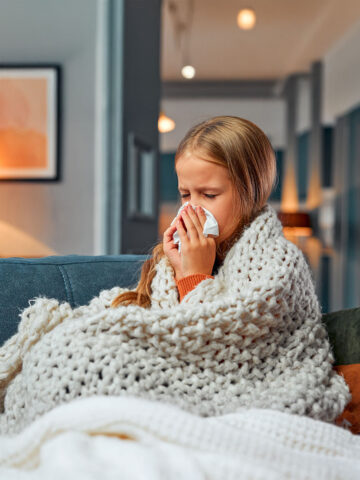Have you ever heard of mononucleosis, or mono, called “the kissing disease?” It’s a cute and catchy nickname, but not totally accurate.
There’s some confusion and misinformation about exactly how people get mono, says Dr. Harvey S. Triebwasser, CHOC director of adolescent medicine.
Here, he clears up some truths and falsehoods about mono and how it’s transmitted.
Myth: You can be vaccinated against mono.
There is no vaccine for mononucleosis. Instead, mono is caused by the Epstein-Barr virus, for which there is no vaccine.
Myth: Kids and adolescents get mono only from kissing.
Mono is spread through a variety of means.
Because Epstein-Barr is an airborne virus, it – as well as mononucleosis – is passed by “droplet spread,” Dr. Triebwasser says.
Specifically, mono is spread by contact with the saliva of an infected person by kissing, coughing, sneezing, sharing eating utensils, or sharing beverages, he says.
Myth: Antibiotics will knock out mono.
Antibiotics are ineffective against mono because the disease is viral, not bacterial.
Instead, someone with mono should treat his or her symptoms: lots of rest; salt water gargling and throat lozenges to soothe a sore throat; and acetaminophen or ibuprofen to aid associated aches and pains.
Myth: Mono is a mild disease that you can ignore.
Mono can be fairly mild, but its complications can be very serious, Dr. Triebwasser says.
Mono can cause hepatitis, which is also a viral infection. It may also enlarge the spleen, making contact sports off-limits until the patient is cleared by a doctor. Mono can also cause an inflammation of the heart, which could lead to heart failure.
Common symptoms of mononucleosis include high fever, severe sore throat, swollen lymph nodes and tonsils, and weakness or fatigue.
If your child exhibits symptoms of mono, contact your pediatrician for an accurate diagnosis, Dr. Triebwasser says.






